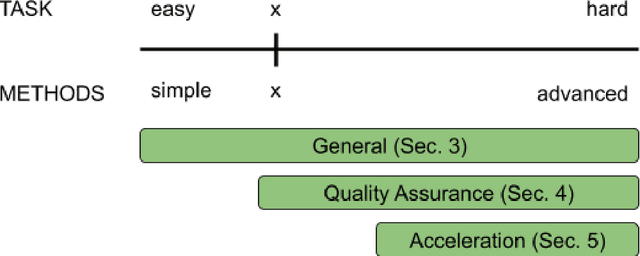Gabriela Zarzar Gandler
On the Power of Heuristics in Temporal Graphs
Feb 07, 2025Abstract:Dynamic graph datasets often exhibit strong temporal patterns, such as recency, which prioritizes recent interactions, and popularity, which favors frequently occurring nodes. We demonstrate that simple heuristics leveraging only these patterns can perform on par or outperform state-of-the-art neural network models under standard evaluation protocols. To further explore these dynamics, we introduce metrics that quantify the impact of recency and popularity across datasets. Our experiments on BenchTemp and the Temporal Graph Benchmark show that our approaches achieve state-of-the-art performance across all datasets in the latter and secure top ranks on multiple datasets in the former. These results emphasize the importance of refined evaluation schemes to enable fair comparisons and promote the development of more robust temporal graph models. Additionally, they reveal that current deep learning methods often struggle to capture the key patterns underlying predictions in real-world temporal graphs. For reproducibility, we have made our code publicly available.
Expressivity of Representation Learning on Continuous-Time Dynamic Graphs: An Information-Flow Centric Review
Dec 05, 2024Abstract:Graphs are ubiquitous in real-world applications, ranging from social networks to biological systems, and have inspired the development of Graph Neural Networks (GNNs) for learning expressive representations. While most research has centered on static graphs, many real-world scenarios involve dynamic, temporally evolving graphs, motivating the need for Continuous-Time Dynamic Graph (CTDG) models. This paper provides a comprehensive review of Graph Representation Learning (GRL) on CTDGs with a focus on Self-Supervised Representation Learning (SSRL). We introduce a novel theoretical framework that analyzes the expressivity of CTDG models through an Information-Flow (IF) lens, quantifying their ability to propagate and encode temporal and structural information. Leveraging this framework, we categorize existing CTDG methods based on their suitability for different graph types and application scenarios. Within the same scope, we examine the design of SSRL methods tailored to CTDGs, such as predictive and contrastive approaches, highlighting their potential to mitigate the reliance on labeled data. Empirical evaluations on synthetic and real-world datasets validate our theoretical insights, demonstrating the strengths and limitations of various methods across long-range, bi-partite and community-based graphs. This work offers both a theoretical foundation and practical guidance for selecting and developing CTDG models, advancing the understanding of GRL in dynamic settings.
Text Annotation Handbook: A Practical Guide for Machine Learning Projects
Oct 18, 2023



Abstract:This handbook is a hands-on guide on how to approach text annotation tasks. It provides a gentle introduction to the topic, an overview of theoretical concepts as well as practical advice. The topics covered are mostly technical, but business, ethical and regulatory issues are also touched upon. The focus lies on readability and conciseness rather than completeness and scientific rigor. Experience with annotation and knowledge of machine learning are useful but not required. The document may serve as a primer or reference book for a wide range of professions such as team leaders, project managers, IT architects, software developers and machine learning engineers.
 Add to Chrome
Add to Chrome Add to Firefox
Add to Firefox Add to Edge
Add to Edge